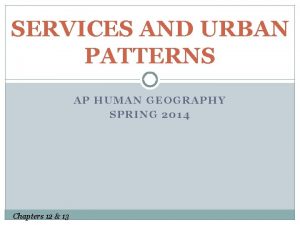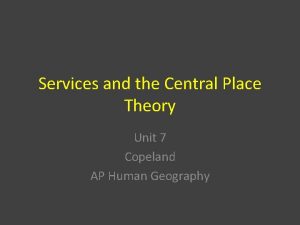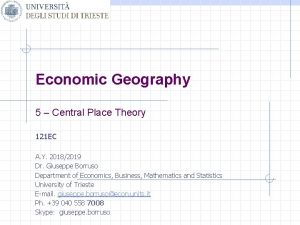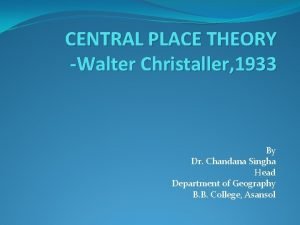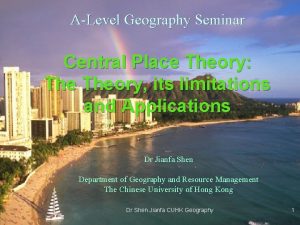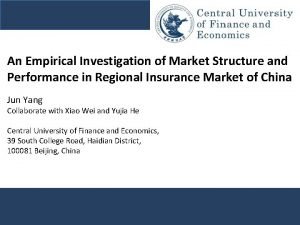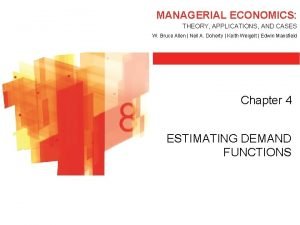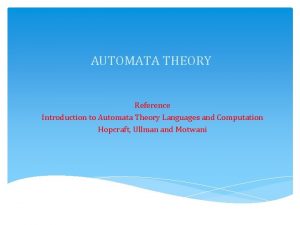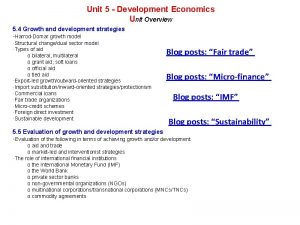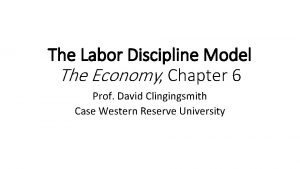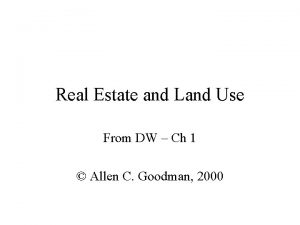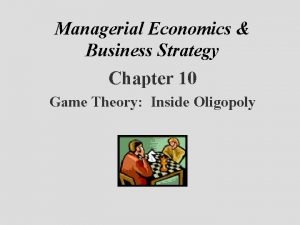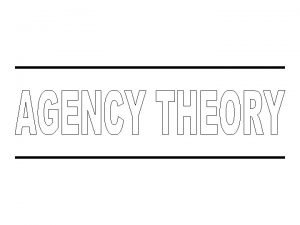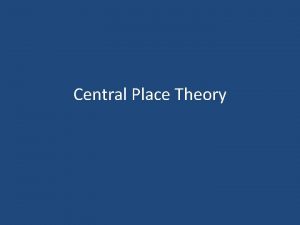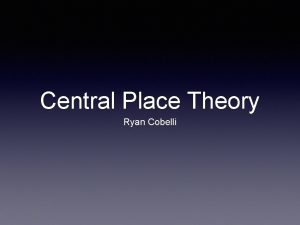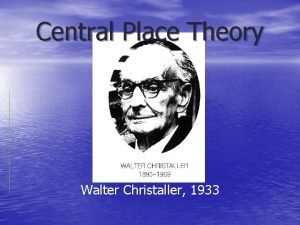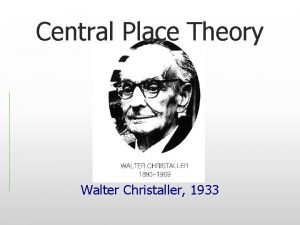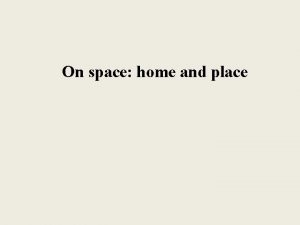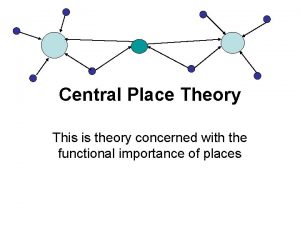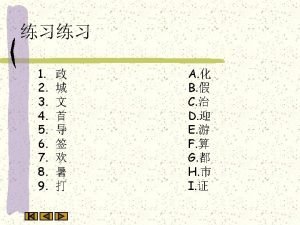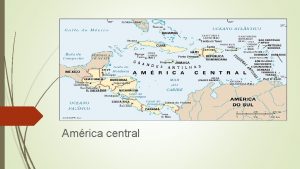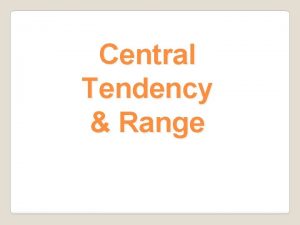MODEL CENTRAL PLACE THEORY centralplace theory economics and

























- Slides: 25






MODEL: CENTRAL PLACE THEORY


central-place theory economics and geography Main location theory concerning the size and distribution of central places (settlements) within a system. Central-place theory attempts to illustrate how settlements locate in relation to one another, the amount of market area a central place can control, and why some central places function as hamlets, villages, towns, or cities.

• The theory consists of two basic concepts: • 1) threshold -- the minimum market needed to bring a firm or city selling goods and services into existence and to keep it in business • 2) range -- the average maximum distance people will travel to purchase goods and services

Assumptions: Christaller made a number of assumptions such as: All areas have • an isotropic (all flat) surface • an evenly distributed population • evenly distributed resources • similar purchasing power of all consumers and consumers will patronize nearest market • transportation costs equal in all directions and proportional to distance • no excess profits (Perfect competition)

�� A Central Place is a settlement which provides one or more services for the population living around it. �� Simple basic services (e. g. grocery stores) are said to be of low order while specialized services (e. g. universities) are said to be of high order. �� Having a high order service implies there are low order services around it, but not vice versa. �� Settlements which provide low order services are said to be low order settlements. Settlements that provide high order services are said to be high order settlements. �� The sphere of influence is the area under influence of the Central Place.



Distance decay models A. Inverse distance decay, α/dβ B. Exponential distance decay, αe‑βd











 Threshold ap human geography definition
Threshold ap human geography definition Place theory
Place theory August lösch
August lösch Christaller’s central place theory
Christaller’s central place theory Christaller's central place theory
Christaller's central place theory Central place theory limitations
Central place theory limitations Central place theory definition geography
Central place theory definition geography Maastricht university economics and business economics
Maastricht university economics and business economics Place place value and period
Place place value and period Central university of finance and economics
Central university of finance and economics Elements of mathematical economics
Elements of mathematical economics How geographers look at the world
How geographers look at the world A repeating disturbance that transfers energy
A repeating disturbance that transfers energy A wave is a disturbance that transfers energy
A wave is a disturbance that transfers energy Managerial accounting chapter 8
Managerial accounting chapter 8 Managerial economics: theory, applications, and cases
Managerial economics: theory, applications, and cases Descriptive epidemiology
Descriptive epidemiology Study and central concepts of automata theory
Study and central concepts of automata theory National development
National development Labour discipline model diagram
Labour discipline model diagram 4q model real estate
4q model real estate Game theory managerial economics
Game theory managerial economics Quantity theory of money economics
Quantity theory of money economics Why printing money causes inflation
Why printing money causes inflation What is agency theory
What is agency theory Zone opasnosti
Zone opasnosti
